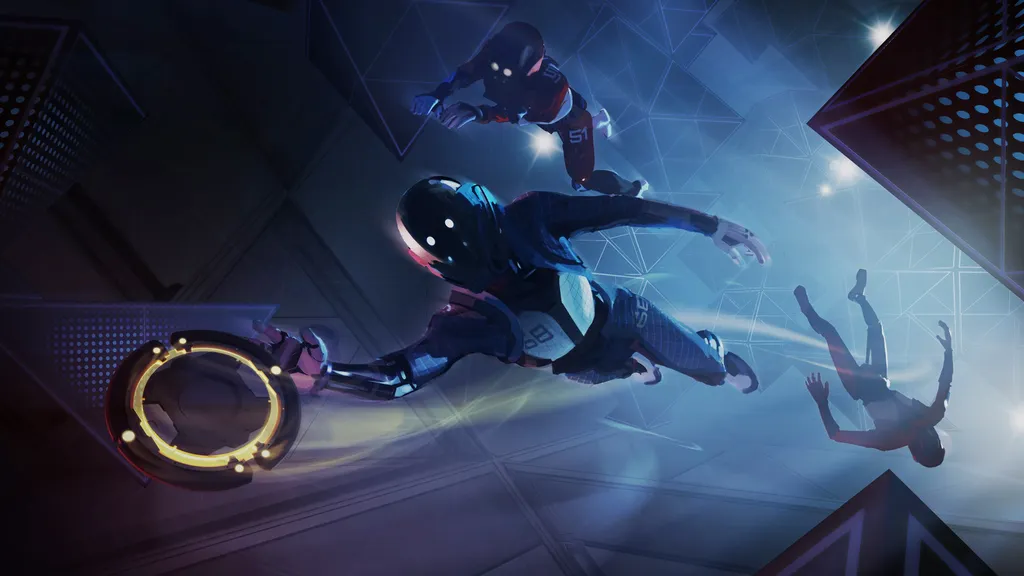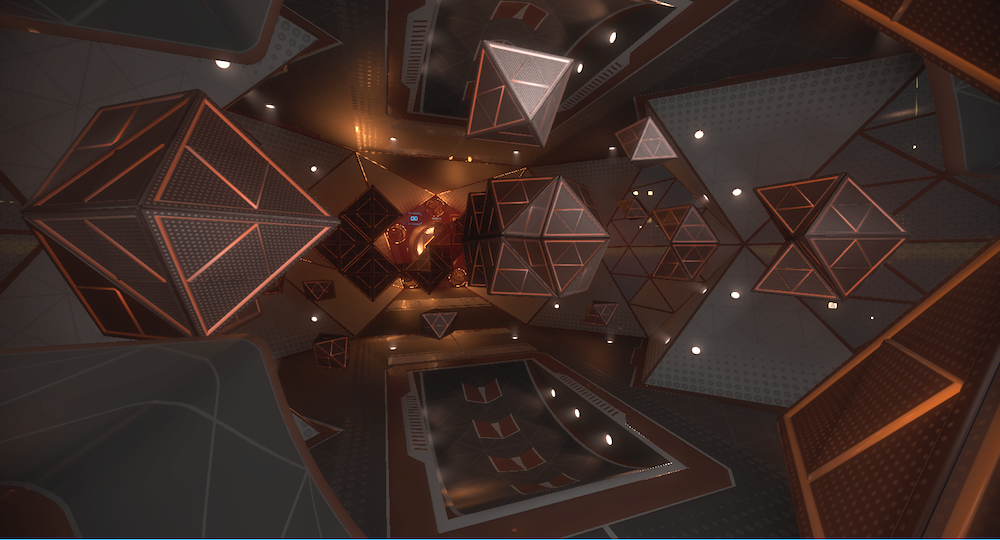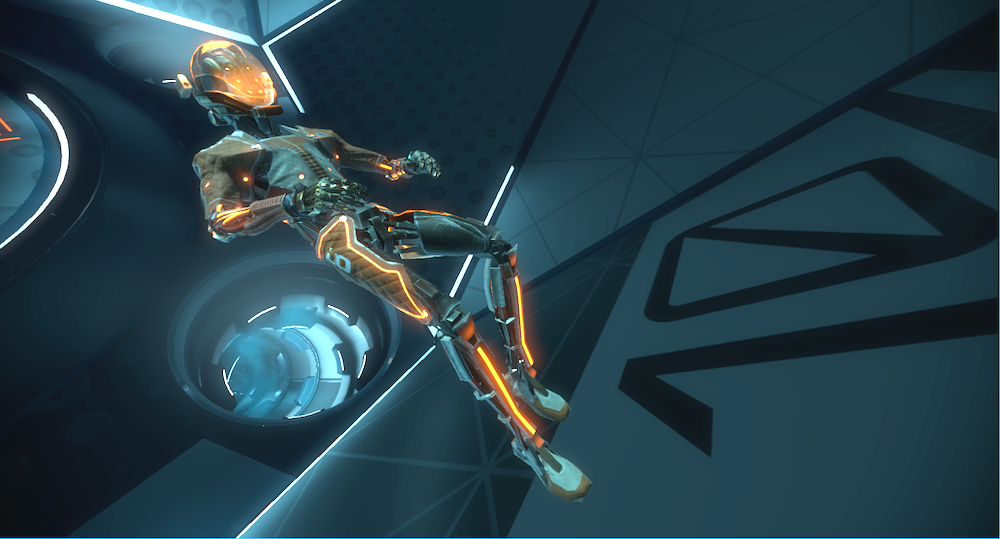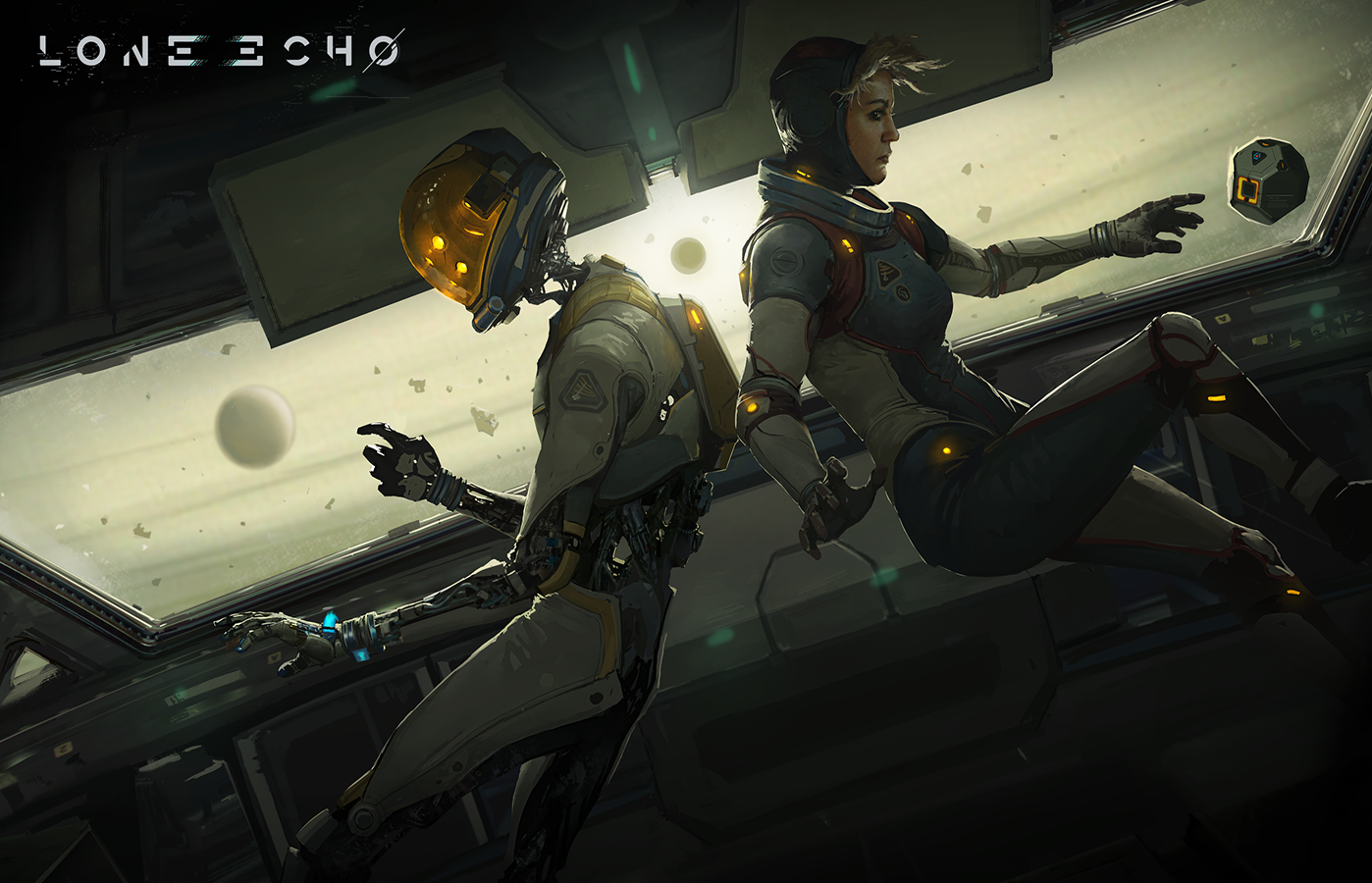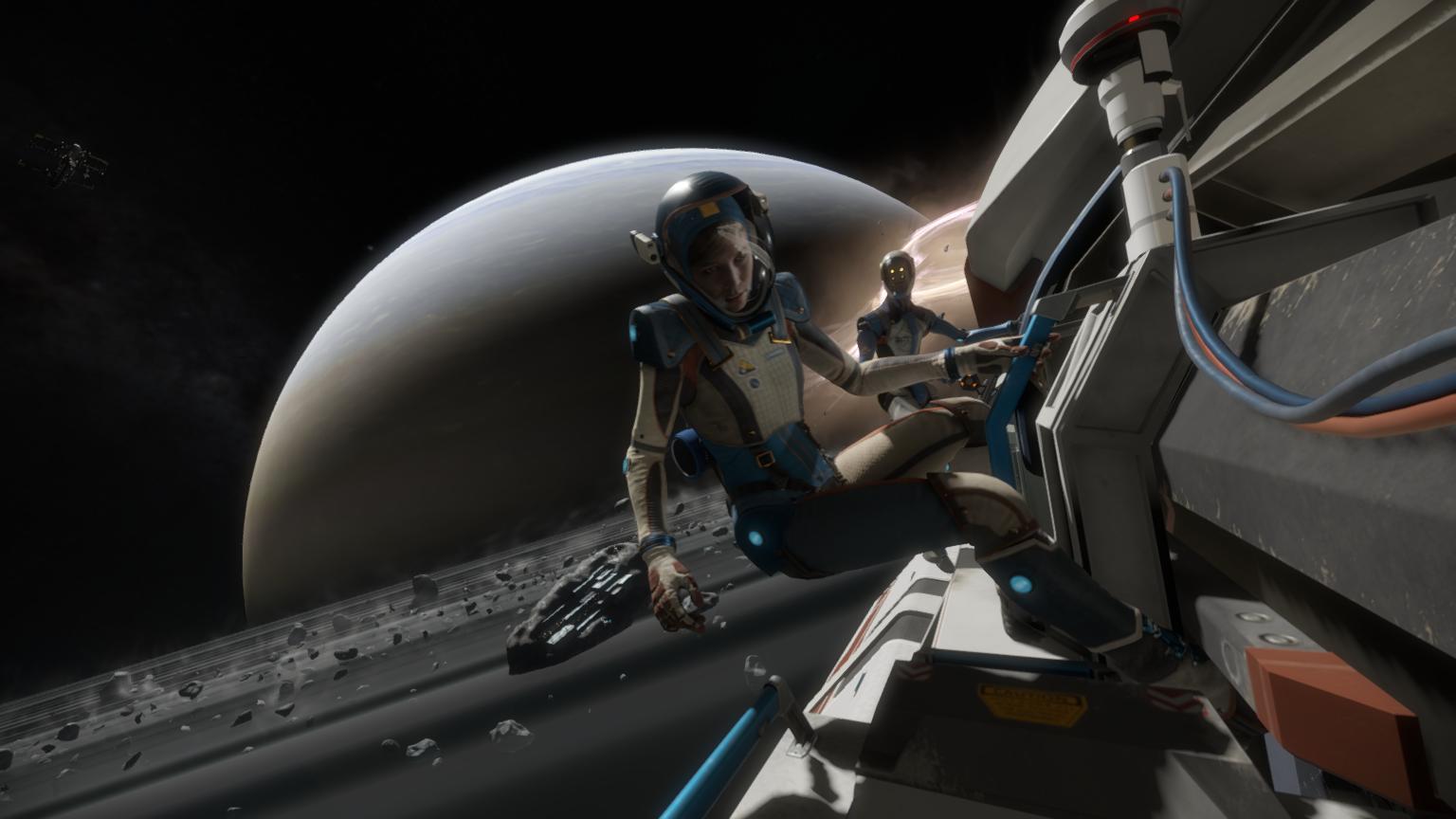One day, mankind will colonize another planet. Some time after that, the inhabitants of this planet will have kids, and then they will send those kids to summer camp. And at that space summer camp, these kids will probably play ultimate frisbee in zero gravity.
I got to live the extravagant life of these hypothetical space camp kids, or maybe just a nicer version of Ender’s Game, thanks to the multiplayer of Lone Echo on Oculus Touch.
Each round of the game’s multiplayer mode starts with two teams of up to five players flying into opposite ends of a sci-fi soccer field. In the middle is a disc, which one team must grab, pass, and throw into the opponent’s goal for a point.
It would all be fairly mundane without one key component: Lone Echo’s incredibly successful movement system. Instead of propelling around zero gravity with a jetpack of some kind, players must grab something — walls, floors, ceilings, blocks, even other players — and push off in the direction of their choice. Then you fly infinitely until you hit another wall, floor, ceiling, etc., and you’ll bounce yourself away once more. For emergency maneuvering, there are micro-boosters on each wrist of your exosuit, able to push you lightly in any direction.
“It was almost like going against the grain,” Ready at Dawn president and creative director Ru Weerasuriya tells me of their traversal system. “Most people would have told you don’t move so much in VR, don’t have 360 degrees of freedom, don’t allow the player to do so much.”
But Lone Echo isn’t a fan of those warnings.
“The very first thing we did was build something for VR that actually solved something for VR,” Weerasuriya explains.
Their solution, luckily, is endless fun. My teammates and I spent the first half of our demo time happily screaming, learning to throw our bodies around and punch each other in the face, all while Captain Dave (a developer and pretty much our camp counselor) herded our playtime through various training rooms.
More shocking to us than our new weightlessness, though, was how successfully social the multiplayer “Echo Arena” of Lone Echo truly was. A spot-on intercom system keeps all of the action comprehensible; you can hear in each voice its distance and position relative to yourself, even as players dart across the room. Our avatars move their arms and heads as we do, making each virtual space body a believable companion. And the more we fooled around in the air, the more existent each avatar felt. It’s a strange phenomenon the developers felt in even the early stages of their product, a social recognition they call “magical.”
“That actually happened in the very first instances that we played at work,” Weerasuriya says. “There were no name tags. Imagine no name tags, you have no way of telling who that other person is.”
Even so, the team could recognize each other solely from the movements of their virtual selves. “There’s something that that other person does — just a head bob, the way they move their hands,” he continued. “Then we knew exactly who that person was.”
The intelligent audio system, the smooth traversal system, and the movement of these virtual bodies all combine to create social believability where other humans are involved. Lone Echo proves that the movement of someone’s virtual body can be a believably bonding physicality.
When we bumped into each other, struggling to get our bearings, we jeered and laughed. When we found new play strategies, we yelled across the room to the cheers of our teammates. At one point, Captain Dave tried to usher us out of the initial play room and into a more serious training area, and everyone groaned, dropped their toys, and begrudgingly made their way over like schoolkids ending recess.
This friendliness bled into our actual matches, despite their competitive nature. Lining up outside of the arena’s entry point, our team grabbed each other by the shoulders. The buzzer sounds, and our daisy-chain is rocketed out into the field. Once we’ve cleared the launch, I let go and drift at my own angle towards the target disc. I aim for a floating cube so that I can steady myself and prepare to launch at a new vector.
I can hear the room’s laughter as we fly clumsily past one another. Our precious minutes before this have not prepared us perfectly for actual space-sports. I miss my target, badly. But every crude slam into the wrong wall just means another chance to happily re-fling myself towards the goal.
Someone on my team intercepts the disc from the enemy mid-pass. I launch myself ahead of him, and not wanting to give away our plans, silently wave my arms above my head like I would in any real-life sport. He notices instantly and sends the disc my way.
I make the catch, and with my last ounce of forward momentum, fling the object a little too leftward of the goalposts. But at the last moment, a teammate flies in and snatches my wayward shot, slamming it into the goal.
A celebratory light show bursts out from every shot we make. Both teams laugh and hurrah every time. Everyone here is having fun in a manic way that reminds me of what it’s like playing Rocket League. There’s a lot to learn and master, but at the end of the day it’s also incredibly fun to suck.
Lone Echo’s multiplayer arena is an absolute gem, the unintended star of what was originally just a single player game. When I speak to the developers about their add-on multiplayer creation, they are often quick to turn the conversation to the game’s primary campaign, a journey through a space station with an AI robot companion.
Ready At Dawn is proud of their single player story, and of that I’m glad, but I can’t help but feel they’re a bit unaware of how enrapturing this arena has been. Lone Echo’s multiplayer is genuine fun, a social marvel, and the most brilliant development afterthought I’ve encountered so far.
This article was originally published on May 25th, 2017.

